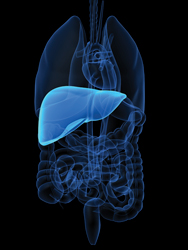You’ve waited more than 20 years to hear the words: “You are cured.” Now that the hepatitis C virus (HCV) infection is behind you, your future liver health is up to you. If you ignore doctors’ orders and party like a college kid, you will add insult to the injury that’s been done for decades.
“Our worst fear is that patients with advanced liver fibrosis (scarring) will drop out of the healthcare system, thinking that they’re cured,” says Bruce Luxon, MD, PhD, Anton and Margaret Fuisz Chair in Medicine, chairman and physician in chief, Department of Medicine, Georgetown University. “Indeed, they are cured of their hepatitis C, but they still have liver disease,” says Luxon, a member of the National Hemophilia Foundation’s Medical and Scientific Advisory Council (MASAC). Follow your liver doctor’s recommendations for follow-up care and lifestyle changes.
Liver recovery
The development of direct-acting antivirals (DAA), combination oral drugs that disrupt proteins HCV needs to reproduce, has dramatically improved the outlook for all patients. That includes people with hemophilia and HCV, who previously hadn’t been cured at the rate of the general public. “Now our goal is to cure everybody,” Luxon says. By “cure,” he means achieving sustained virologic response (SVR), where there is no detectable viral load (HCV RNA) in the blood 12 weeks after treatment ends.
Clearing the body of HCV has significant health benefits. “That is extremely exciting because we may be impacting diabetes, atherosclerosis and cardiovascular disease, stroke risk and renal disease,” says Kenneth Sherman, MD, PhD, Gould Professor of Medicine and director of the Division of Digestive Diseases at the University of Cincinnati College of Medicine.
But being told you’re cured is only the first step in a long recovery process. How your liver and other organs rebound after SVR depends on the extent of fibrosis and complications beforehand. “Fibrosis (liver scarring from chronic HCV infection and inflammation) takes, on the average, 10 to 20 years to develop,” Luxon says. “It takes another 10 to 20 years to go away.”
Lifestyle changes
Over-the-counter drugs and beverages containing alcohol can damage your liver. Stay below the 2,000 mg-per-day limit for acetaminophen, a pain reliever commonly recommended for people with bleeding disorders, say liver specialists.
Think twice about knocking back a cold one. “If you have advanced fibrosis, avoid alcohol for sure,” Luxon says. Tattoos and piercings may be popular, but they should be considered cautiously. “Any type of skin breakage with potentially contaminated materials poses a risk for reinfection with hep C,” warns Sherman.

Eraxion/ThinkStock
Follow-up medical care
A hepatologist, or liver specialist, is the preferred provider when it comes to liver diseases. He or she will advise you of what tests and screenings you’ll need, and how often. Remember: If you have advanced fibrosis or cirrhosis, you will be followed much more closely.
The most accurate measure of liver fibrosis is the METAVIR score. It ranges from F0, no scarring, to F4, cirrhosis. It can be obtained without the invasiveness of a biopsy, using FibroScan®. This device bounces sound waves off the liver, determining how stiff, or fibrotic, it is.
Hepatocellular carcinoma (HCC), a type of liver cancer, is another condition to monitor. “The risk of liver cancer continues in a person with cirrhosis, even after an SVR,” Luxon stresses. “It’s so important to be aggressive with the follow-up, because HCC doubles at a rate of about every four to six months,” adds Sherman. Ultrasound screenings can pick up tumors larger than 1 centimeter. A blood test reveals the level of the HCC tumor marker alpha-fetoprotein.
If the ultrasound detects a cancerous tumor, the next step is a CT scan or MRI to provide more information. When HCC is caught early, before reaching 6 centimeters, you’re a candidate for a liver transplant, Sherman says. “But if the tumor is big, has spread outside the liver or has invaded important structures, then we don’t have many options,” says Luxon.
“Any patients with advanced fibrosis, F3 to F4, should be followed at six-month intervals with ultrasound and labs that assess their Model for End-Stage Liver Disease (MELD) score,” Sherman says. The MELD score is calculated using a formula measuring bilirubin, creatinine and INR (prothrombin time). Changes indicate advancing liver disease. For instance, a spike in liver enzymes could signal reinfection with HCV.
Portal hypertension, high blood pressure in veins feeding into the liver, usually resolves after SVR. But if you have cirrhosis, you may still have esophageal varices, varicose veins in your esophagus that can rupture. Current guidelines recommend an initial upper endoscopy for a person with cirrhosis, says Luxon. “Then, depending on the size of the varices, every one to two years after that,” he says.
Patients with advanced liver disease need intermittent testing for antibodies to hepatitis A and B. “Those patients do not achieve as high a titer of antibody,” says Sherman. They may need periodic booster shots, he adds.
HIV accelerates damage to the liver from HCV. This can lead to decompensation, in which the liver cannot repair itself. “If these patients have cirrhosis or F3 fibrosis, they need to be monitored for further decompensation and/or the development of liver cancer,” Luxon says.
Don’t disappear
Occasionally, a patient who failed to follow up has tragic consequences. “None of us likes to lose a patient whom we’ve treated,” says Luxon.
Even though you’ve been cured of hepatitis C, you may still have liver disease. So don’t ditch your doctor or stop scheduling important tests. “In some patients, we’re doing the follow-up every six months for life,” Sherman says.

